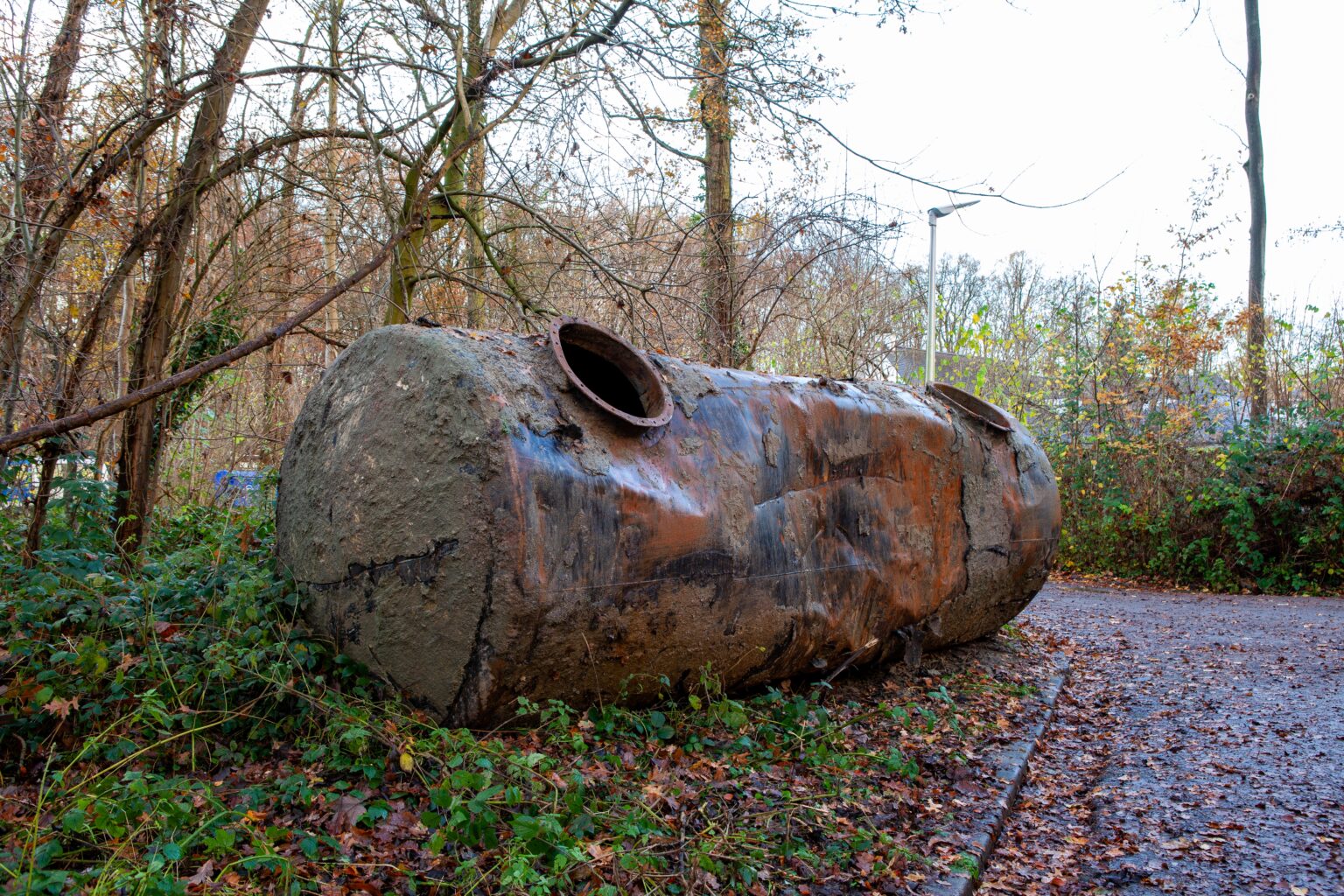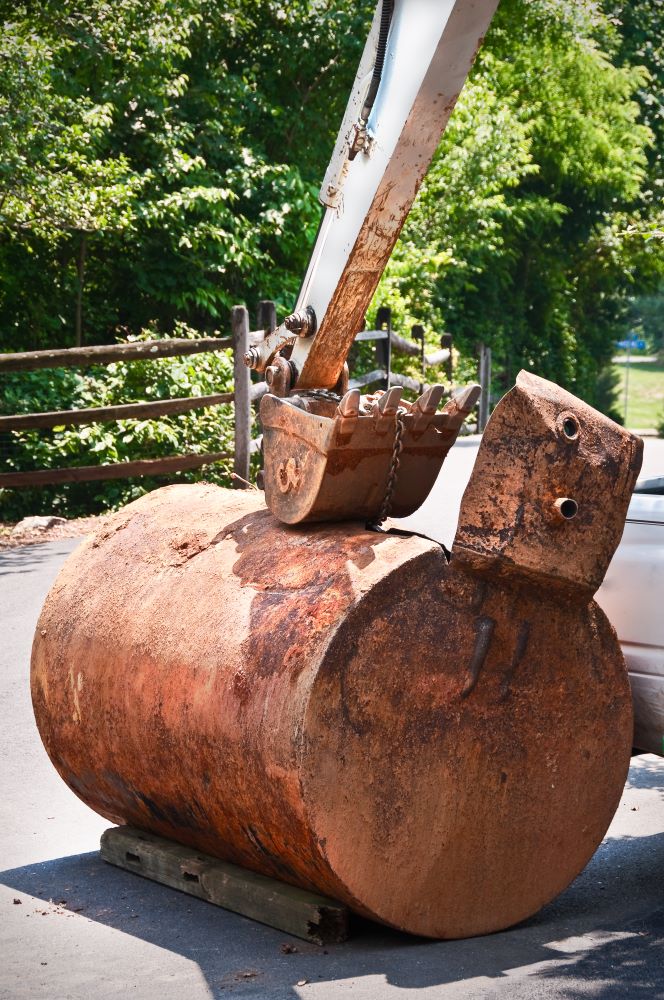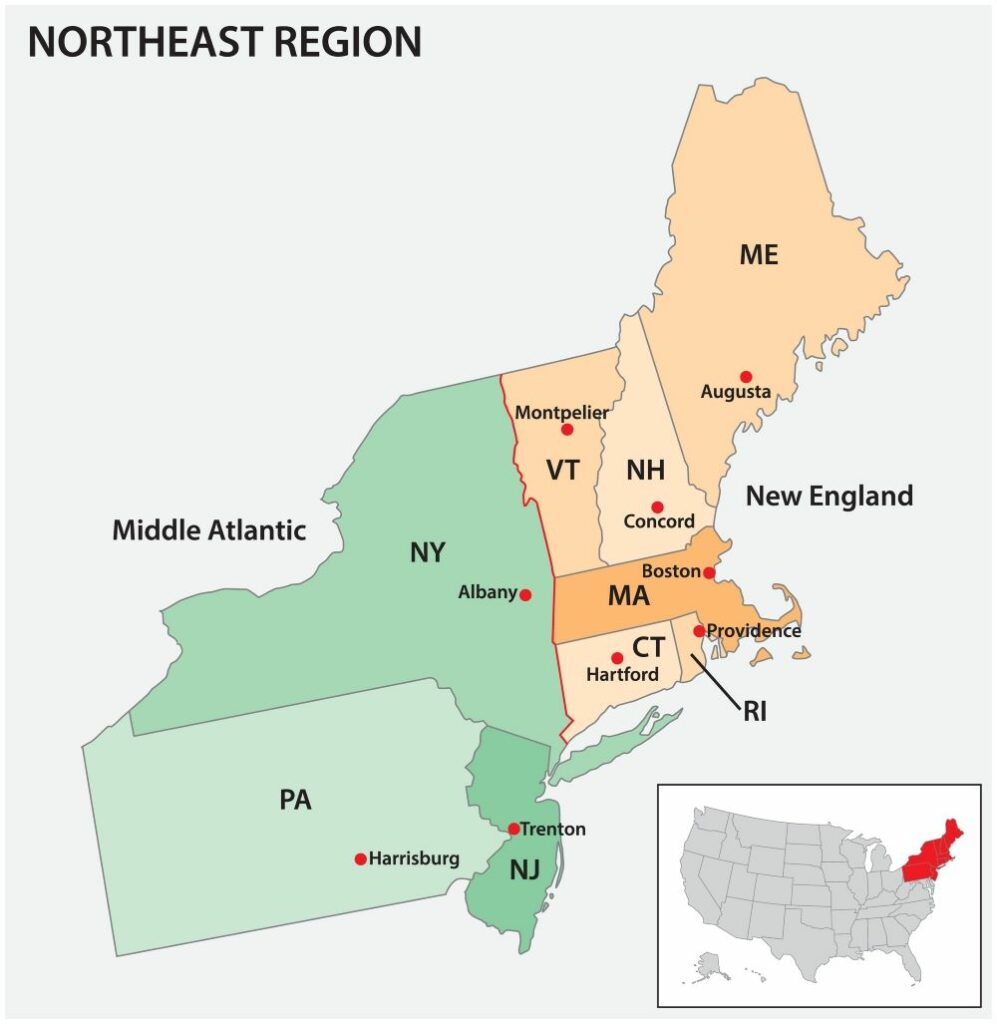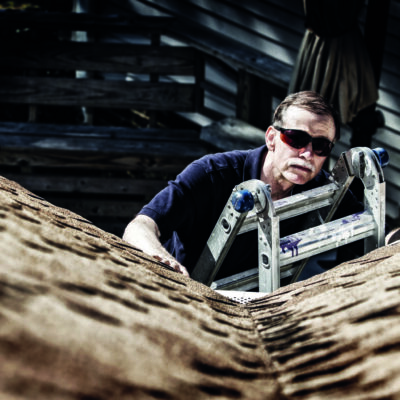Underground Oil Tanks: The Backyard Time Bomb Home Inspectors May Encounter
By Alyssa Cink
Last Updated October 5, 2023

Out with the old, in with the new. People say this when describing things that have either stopped functioning or gone out of fashion. Washing machines. Cabinet colors. Low-waisted jeans. High-waisted jeans. When something’s run its course, there’s usually something new waiting to take its place.
But even when they fall out of favor or function, most items don’t go away so easily. The jeans stay in your closet. You move the old refrigerator to the garage. You even leave the outdated oil tank buried on your property until, someday, a new homeowner moves in and faces the ticking time bomb of an environmental and financial mess just waiting to explode. And it’s those oil tanks that we want to talk about.
Buried oil tanks are becoming more rare. Still, in some regions of the U.S., surprise oil tanks remain a grave concern. Prone to corrosion, these tanks can leak, unleashing calamity on the surrounding environment. The aftermath is costly to remediate, with liability usually falling on whoever owns the property in which it’s buried.
You can see where we’re going here. Underground tanks are a bane to real estate markets. Realtors call them “deal-killers.” Moreover, home inspectors grapple between protecting homebuyers and managing their own risk.
It’s a fine line. We explore the basics to help you prepare.

Buried Oil Tanks: What are they?
Before natural gas lines, Americans heated and energized their homes with oil, explains Ashley Papa in a Family Handyman article. From the 1930s to the 1980s, tanks commonly stored this oil, the same article says. Because these tanks were prone to theft and displeasing to the eye, many homeowners opted to bury them. Then, in the 1970s, an invigorated environmentalist movement and national energy crisis prompted Americans to rethink their relationship with fossil fuels.
As a result, underground oil tanks became less and less mainstream. But they didn’t disappear entirely, says Fred Lawrence of En-Spect Environmental in New York and Pennsylvania.
“When natural gas came into the area, a lot of companies gave the option to run gas lines to these houses and terminate the oil lines. Not all of them were taken care of properly, [leaving] buried oil tanks on properties. And even the people in the houses don’t know they’re there,” he explained.
What is the main problem with underground storage tanks? The longer they’re buried, the more likely they are to corrode or get damaged, Papa writes. This spells contamination for the surrounding soil and groundwater.
“If you fast-forward to once [the tanks are] about 30 years old, sometimes younger, they’re starting to rust out and you don’t necessarily know they are. So it can lead to a contamination issue,” Lawrence agrees.
An Uncommon (But Costly) Fix
Underground storage tanks are still in use today. However, Lawrence says, the procedure for installing them is very different. Residential propane tanks, for example, are set in a completely enclosed, concrete tomb, making them easy for fuel companies to visually inspect annually.
Luckily, compared to these safer, modern tanks, the chances of finding an older tank are slimmer for homeowners. As Lawrence explains, enough real estate transactions have occurred that most of them have been discovered and remediated.
“A lot of these tanks you come to find out, the older guys knew what they were doing. They decommissioned the tank and filled [it] full of stone or…full of sand,” he said.
Even so, the fear of finding one persists.
“The old oil tanks are the ones that everyone fears. You don’t want to end up taking possession of a property that has an old oil tank because you become liable for whatever ends up happening. [And] there’s a pretty good expense that’s tied up to it,” Lawrence adds.
Remediation costs vary. According to the U.S. Environmental Protection Agency (EPA), minor cleanup can be as low as $10,000. Depending on the extent of the contamination, corrective action for ground water can cost from $100,000 to over $1 million, the EPA says. Homeowners insurance may (or may not) cover it.
Even without contamination, underground oil tanks can be costly. If a homeowner discovers an oil tank buried on their property, factors like state regulations, resale concerns, lack of homeowners insurance coverage, and the risk of leakage may push them to take action, the Family Handyman article says. The cost to remove a buried oil tank, for example, ranges from approximately $1,000-2,500.
A Homeowner and Home Inspector’s Dilemma
Naturally, buyers and sellers alike worry about the expense of purchasing a home with an old, leak-prone, underground oil tank. Buyers are more hesitant to purchase such homes, and sellers face added expenses before putting them on the market, Kathleen Lynn writes for The Record.
Meanwhile, if someone buys a home that had a buried tank but lacks proof of removal, they may struggle to get mortgages from lenders, Lynn says. Alternatively, if the home sells and the new owner discovers a tank later, they inherit the possible liability and expense.
But that’s not the only concern. An oil leak may go undetected for years. Furthermore, in the event of a leak, the oil could cause indoor air pollution and contaminate any nearby water. According to a Hometown Demolition article, this could include recreational water, like lakes, drinking water, soil, and surface water.
This, in turn, raises a dilemma for home inspectors. Under many standards, you’re performing a limited, visual inspection of accessible systems and components. Some standards of practice (SOP)s, like the American Society of Home Inspectors’ (ASHI’s), specifically exclude these concealed “Underground items including, but not limited to, underground storage tanks and other underground indications of their presence, whether abandoned or active.”
Note that your state may enforce an SOP that contradicts association standards for buried tanks. Check your local regulations to ensure compliance.
Regardless of what standards are in place, if they see obvious signs of a buried oil tank, many inspectors feel it’s their due diligence to warn their client, says Reuben Saltzman of Structure Tech Home Inspections in his blog. So, what can inspectors do to protect themselves and their businesses against buried oil tank claims?
How can inspectors manage their risk?
To limit your liability against these concealed, underground systems, we recommend setting clear expectations with clients, being consistent, presenting information carefully, and referring to specialists. We go into greater detail below.

1. Set clear expectations.
Few of your clients will have a realistic idea of what your home inspections do and do not cover.
To prevent misunderstandings, take initiative to set and maintain their expectations. Particularly if you live in an area where concealed defects like buried oil tanks are more common, use multiple avenues of communication.
For example, your pre-inspection agreement should clarify the intent of your visual inspection, reference whichever SOP you follow, and explain how you test major systems and appliances per your scope. It should also address items excluded from your inspection, like the items you never inspect or only inspect as an ancillary service. Learn more about contract exclusions and how to use them here. And, of course, make your contract your first line of defense by getting it signed before you start every inspection.
Now, there’s always the possibility that clients won’t read your agreement, either thoroughly or at all. To counteract this, discuss the terms and limitations of your inspections elsewhere, too. For example, if you suspect the home of having a buried oil tank, remind the client in your report and in conversation that tanks are outside your scope. Your visual home inspection does not include a tank sweep, and you can’t see through walls or soil. Therefore, you can’t confirm the presence or absence of a tank.
We cover written and spoken disclaimers in greater detail here.
2. Be consistent.
When followed correctly, your SOP helps limit your liability and defend you in the event of a claim. Exceeding those standards opens you up to greater risk. We recognize, however, that many inspectors believe the minimum standard is too narrow for a complete home inspection service.
Our advice: When it comes to something outside your scope like a buried oil tank, make sure your actions and your report recommendations are consistent. Create a plan for the way you discuss underground tanks and your SOP with clients and how you address evidence of a tank in your report, if at all. And then stick to your plan at each inspection. In a claim, any inconsistencies across jobs or properties could be used against you.
3. Find balance between not scaring and not under-informing.

If your clients are worried about a possible underground oil tank, or you observe signs of one, take caution with how you present your information, Lawrence suggests.
“You don’t want to scare them and you don’t want to under-inform them,” he says.
Don’t ever assume there is or isn’t a buried oil tank. Stick to the facts you can see. For example, homes built before 1980 and along the Northeast coast run a greater chance of having one, Lawrence told us—although the western states like Washington are no stranger to them, either. You might even see a vent pipe or tank cap. Additionally, he says, the more time you spend in certain neighborhoods, the more familiar you’ll become and the more patterns you’ll know to look for.
Meanwhile, protect yourself by avoiding definitive conclusions and making your scope clear as day.
“You can’t fully say, ‘Hey, there’s no tank here’ or ‘There never was,’” Lawrence said. “You’ve got to be able to say, ‘This is what I was able to see and this is what I wasn’t able to see.’ … State what you found. … It’s not any conclusive evidence, but…you don’t want to freak people out and have them digging up yards that they don’t necessarily need to.”
4. Refer to specialists.
You want to help; we understand. Still, it’s important not to involve yourself beyond the scope of your expertise as a home inspector. In your efforts to help, you don’t want to give advice outside your purview and take on unnecessary liability. If you observe signs of an underground oil tank, don’t try to do a specialist’s job.
Instead, refer it out, Lawrence encourages. State the facts, keep it simple, and put your clients in touch with the right specialist for a possible buried tank.
“My cliche line is, ‘I’m the generalist. I will refer you to the specialist. If your knee hurts, come see me, but then I’m going to refer you to the ortho,” he said. “You can help people get in touch with the professional that’ll come in to verify whether or not [a buried oil tank] exists. But let the [specialists] tell them how grave it is or how not grave it is.”
“Wear your own hat,” Lawrence continues. “I always say, ‘Hey, let the realtors be the realtors, the attorneys be the attorneys, the appraisers be the appraisers, and us, we’ll be the inspectors. Don’t try to tell people the way it’s going to go down… because you don’t want to miss something.”
Don’t “bury” your business with an outdated agreement.
Whichever SOP you follow, and however your state requires you to handle underground oil tanks, you need a contract designed with you in mind.
Sadly, we see many inspectors using cookie-cutter templates poorly equipped for their defense. As a result, these inspectors miss out on the protective language that makes the biggest difference in fighting claims.
Not with InspectorPro. Our goal is to equip every home inspector with the tools they need to prevent and combat complaints. When you’re insured with us, you get free access to our state-specific pre-inspection agreements. We’ve poured more than 10 years of claims handling experience and research into these contracts, and we update them regularly to give you the best possible compliance with your state’s legislation and case law. Plus, if you get a claim while using an InspectorPro contract, we’ll take $1,000 off your deductible.
Already covered with InspectorPro? Click here to get your copy of our contract. Otherwise, fill out a no-obligation application for insurance here. We’ll put you in touch with an InspectorPro team member to answer your questions about our coverage options, pre-inspection agreements, and other available discounts.





